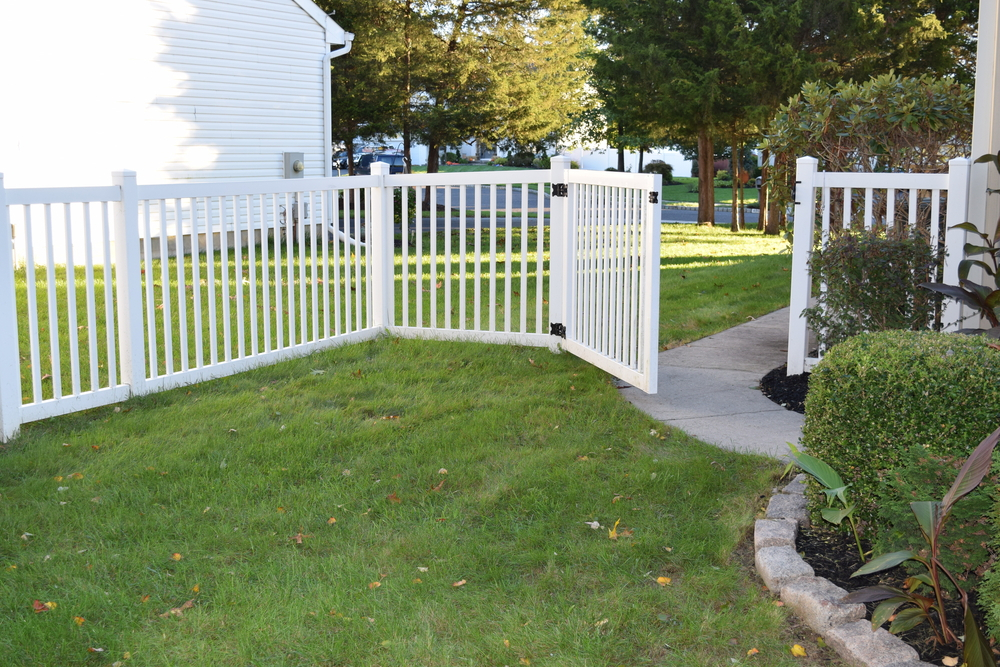
How Many Gates Should a Fence Have
You might not realize that the number of gates your fence should have depends on various factors. Considerations such as accessibility needs, security concerns, and the size of your property all play a role in determining the optimal number of gates to install.
But did you know that the decision between having a single gate or multiple gates can significantly impact not only the functionality but also the overall aesthetics of your fence? Let’s explore how this choice can influence your property in more ways than you might expect.
How Many Gates Should a Fence Have? Factors to Consider
When deciding on the number of gates for your fence, consider the layout of your property and ease of access. Assess how many entry points are necessary for convenience without compromising security. If you have a large property with multiple sections, having more gates strategically placed can make it easier to move around. On the other hand, if your property is small and having multiple gates seems unnecessary, you might opt for just one or two gates for simplicity.
Additionally, think about the primary purpose of your fence. Are you installing it mainly for security reasons, to keep pets contained, or for aesthetic purposes? The function of your fence can influence the number of gates needed. For instance, if security is a top priority, having fewer gates with sturdy locks might be more appropriate.
Ultimately, the decision on the number of gates for your fence should align with your specific needs and preferences. Take into account the layout of your property, your daily routines, and what’ll make your life easier in the long run.
Types of Gates
When choosing gates for your fence, you’ll need to decide between swing and sliding gates.
Another important consideration is whether you prefer manual or automatic gates.
These factors can greatly impact the accessibility and convenience of your fence.
Swing Vs. Sliding Gates
Considering your needs and space constraints, selecting between swing and sliding gates is a crucial decision in fence planning. Swing gates are a traditional option that requires space to open inward or outward. They’re ideal for areas with enough clearance and are simpler to install.
On the other hand, sliding gates are a great space-saving option as they glide horizontally along the fence line. These types are suitable for properties with limited space or steep driveways. While swing gates are usually more affordable, sliding gates offer added security due to their operation method.
Assess your requirements carefully, including available space and budget, to determine whether a swing or sliding gate is the best fit for your property.
Manual Vs. Automatic Gates
To decide between manual and automatic gates, consider your convenience and security needs. Automatic gates offer seamless operation and enhanced security features, while manual gates are typically more cost-effective and simpler in design. Here are some factors to consider when choosing between the two options:
- Convenience: Automatic gates provide effortless access with remote controls.
- Security: Automatic gates offer added security features like keypad entry and sensors.
- Maintenance: Manual gates are usually easier to maintain and repair.
- Cost: Automatic gates are generally more expensive upfront due to installation and components.
- Power source: Automatic gates require a power source, while manual gates operate without electricity.
Evaluate these aspects to determine which type of gate best suits your needs.
Accessibility Needs
Ensure that your fence design accommodates accessibility needs for individuals with mobility challenges. It’s crucial to consider how people with wheelchairs, walkers, or other mobility aids will navigate your property. One way to enhance accessibility is by including at least one gate that’s wide enough to accommodate these aids. A wider gate, preferably a minimum of 32 inches, allows for easier passage and ensures that everyone can enter and exit comfortably.
Additionally, consider the type of gate mechanism you choose. Opting for automatic gates with remote controls or keypad entry can greatly benefit individuals with limited mobility. These gates eliminate the need to manually open and close them, providing convenience and independence for those with mobility challenges.
Moreover, think about the placement of the gate. Ensure that it’s strategically located for easy access from parking areas or sidewalks. This way, individuals with mobility challenges can easily reach the gate without facing obstacles or long distances. By prioritizing accessibility in your fence design, you create a welcoming and inclusive environment for all individuals.
Security Considerations
Enhance the security of your property by strategically incorporating fencing features that deter unauthorized access. When considering security for your property, keep these key points in mind:
- Height Matters: Taller fences are harder to climb over, deterring potential intruders.
- Secure Gates: Ensure gates are sturdy and equipped with reliable locks to prevent unauthorized entry.
- Surveillance Integration: Consider integrating security cameras with your fencing system for increased monitoring capabilities.
- Lighting Solutions: Well-lit areas around your fence can deter unwanted visitors and improve overall security.
- Anti-Climbing Features: Adding features like spikes or rotating toppers can make it difficult for intruders to scale the fence.
Aesthetic Impact
Consider incorporating artistic elements into your fence design to enhance the overall aesthetic appeal of your property. Adding decorative elements like ornate ironwork, colorful stained glass panels, or charming lattice patterns can elevate the visual impact of your fence. These artistic touches can complement the style of your home and landscaping, creating a cohesive and attractive look for your property.
In addition to decorative elements, you can also play with different colors and finishes to make your fence stand out. Opting for a bold color that contrasts with the surroundings can make a striking statement, while a natural wood finish can add warmth and organic beauty to your outdoor space. Choosing the right materials, textures, and shapes can further enhance the visual appeal of your fence, making it a focal point of your property.
Single Gate Vs. Multiple Gates
To maximize functionality and convenience, deciding between a single gate or multiple gates for your fence is a crucial choice to make. When choosing between the two options, consider the following:
- Traffic Flow: Multiple gates allow for smoother movement in and out of different areas of your property, especially if you have a large yard or multiple entry points.
- Security: Having multiple gates can offer enhanced security by restricting access to specific areas and allowing you to control who enters and exits different parts of your property.
- Convenience: If you frequently use different sections of your property, having multiple gates can save you time and effort by providing easier access to specific areas.
- Aesthetics: Depending on the design of your fence and property, multiple gates can enhance the overall look and symmetry of your outdoor space.
- Property Value: Installing multiple gates may increase the value of your property by adding functionality and flexibility to the space.
Property Size
When considering your property size, think about fence accessibility and practical entry points. These aspects are crucial in determining the number of gates your fence should have.
Assessing these factors will help you make an informed decision that aligns with your needs and enhances the functionality of your property.
Fence Accessibility
Ensuring proper fence accessibility depends on the size of your property. It’s crucial to strategically plan the entry points to balance security and convenience.
Here are some key considerations for optimizing fence accessibility:
- Location: Determine the optimal placement of gates based on your daily traffic flow.
- Number: Assess the number of gates needed to provide efficient access without compromising security.
- Size: Choose gate sizes that accommodate both pedestrian and vehicle entry.
- Accessibility: Ensure gates are easily reachable and operable for all users.
- Security: Implement features such as locks or keypads to control access and enhance safety.
Practical Entry Points
For optimal practical entry points based on property size, consider the placement of gates strategically. When dealing with a smaller property, one well-placed gate may suffice. Ensure it’s conveniently located for easy access. A single gate can streamline entry and exit points without compromising security.
In contrast, larger properties may benefit from multiple gates strategically positioned for efficiency. Having multiple entry points can reduce the hassle of navigating long distances within the property. Consider the flow of movement and daily activities when determining the number and placement of gates.
Traffic Flow
Improving traffic flow within a fenced area can enhance overall functionality and convenience for users. To optimize traffic flow within your fenced space, consider the following:
- Strategic Gate Placement: Position gates at points that facilitate smooth movement in and out of the area.
- Gate Width: Ensure gates are wide enough to accommodate the expected traffic volume without causing bottlenecks.
- Traffic Direction Signage: Clearly mark entrances and exits to direct the flow of traffic effectively.
- Separate Entry and Exit Gates: Having distinct entry and exit points can prevent congestion and confusion.
- Emergency Access Gates: Include emergency access gates for quick evacuation or access by emergency services.
Maintenance Requirements
Regular upkeep of fences is crucial to prolong their lifespan and maintain their functionality. To ensure your fence remains in top condition, regular inspections are essential. Check for any signs of damage such as loose boards, rusted hinges, or leaning posts. Addressing these issues promptly can prevent further deterioration and costly repairs.
In addition to visual inspections, regular cleaning is important to prevent dirt buildup, mold, or mildew growth. Use a mild detergent and water to scrub the fence clean, and consider applying a protective sealant to maintain its appearance and durability.
Weather conditions can also impact the lifespan of your fence, so be mindful of extreme temperatures, heavy rains, or strong winds that may cause damage. Regularly trim any vegetation near the fence line to prevent overgrowth that can put pressure on the structure.
Frequently Asked Questions
How Do I Determine the Best Placement for Gates on My Fence?
To determine the best placement for gates on your fence, consider accessibility, traffic flow, and landscaping. Place gates where they provide convenient entry and exit points while maintaining security and enhancing the overall aesthetics.
Are There Any Regulations or Restrictions on the Number of Gates I Can Have on My Property?
You can usually install as many gates as needed on your property, but check local regulations. Municipalities may have rules on gate placement, height, or width. Ensure all gates comply with these guidelines for a hassle-free process.
What Are Some Common Mistakes to Avoid When Installing Multiple Gates on a Fence?
When installing multiple gates on a fence, avoid uneven spacing, ensure proper alignment, use durable materials, consider the landscape, and check for any local regulations. These steps will help prevent common mistakes and ensure a successful installation.
How Can I Ensure That My Gates Are Durable and Long-Lasting?
To ensure durable gates, choose quality materials like steel or aluminum, maintain hinges and latches regularly, and consider the climate’s impact on your gate’s longevity. Proper installation and occasional inspections will help keep your gates long-lasting.
Are There Any Special Considerations for Adding Gates to a Fence in a Residential Vs. Commercial Setting?
In a residential setting, consider aesthetics and privacy when adding gates to your fence. Commercially, prioritize security and functionality. Choose materials and designs that suit the purpose of the gate while complementing the overall property.
Conclusion
When deciding on the number of gates for your fence, consider factors like accessibility needs, security, aesthetics, and property size. Evaluate whether a single gate or multiple gates would best suit your traffic flow and maintenance requirements.
Ultimately, the number of gates you choose should align with your specific needs and preferences to ensure functionality and convenience for your property.
